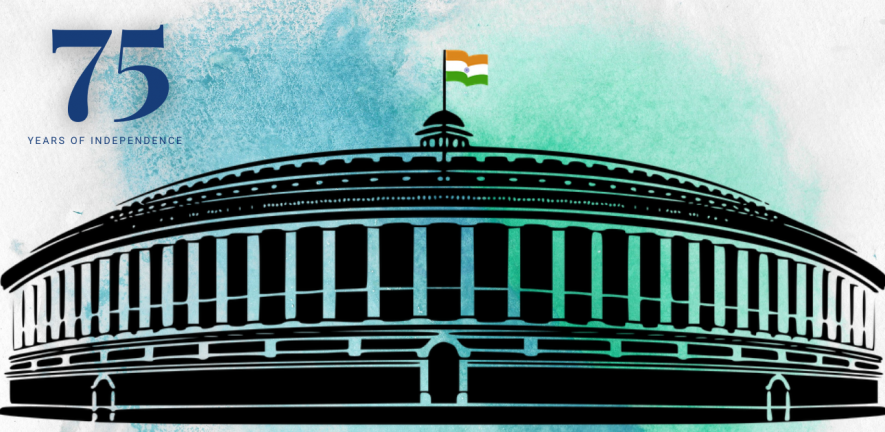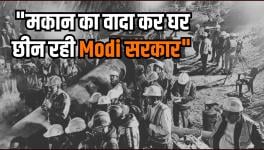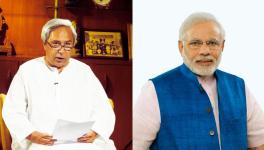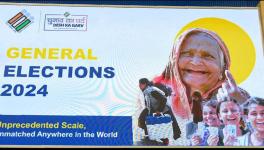Rather than blaming international bodies and institutions, our effort must be to remain in close touch with them as also the think-tanks and prominent NGOs in other countries through our embassies, and furnish them with clarifications and background when they compile data or make their own assessments about India.
——
The Mumbai School of Economics Alumni Association celebrated its centenary year by organising a Special Centenary Address on ‘India’s 75th Year of Independence – Daunting Challenges Ahead’. The address was delivered by Dr Madhav Godbole, with Dr S.A. Dave (Founder Chairperson, Securities and Exchange Board of India and later UTI Mutual Fund) as Chairperson on March 26. The Leaflet reproduces Dr Godbole’s lecture in three parts. We are grateful to Prof. Ritu Dewan, President and Dr Chandrahas Despande, Vice-President of the Mumbai School of Economics Alumni Association for agreeing to The Leaflet’s reproducing Dr Godbole’s address. This is the second part.
Click here to view the first part.
Enact at least the following basic electoral reforms
Now, with the BJP [Bharatiya Janata Party] firmly in power in the Centre and most of the states, it is impossible to separate religion from politics by enacting the requisite constitutional amendment. I have therefore been advocating for some time that at least two basic electoral reforms should be undertaken to reduce the impact of majoritarianism and to protect the interests of minorities.
i) To make voting compulsory
The first is to make voting compulsory, as has been done in at least 30 democracies, which has increased the voter turnout to over 90 per cent. Currently, the voter turn-out in India ranges between 50-70 per cent. In India, since the day of voting is declared a public holiday, there is no justification for not making voting compulsory. After the voting age was reduced to 18 years, voting percentages have gone up considerably. This will be further reinforced by making voting compulsory. After all, India cannot afford to become an absentee democracy.
ii) To make 50 per cent plus 1 vote necessary to win
The other overdue reform is to make 50 per cent plus one vote necessary for a candidate to win an election. The first-past-the-pole system adopted in India, though simple to operate, suffers from some glaring deficiencies. In most cases, the winning candidate gets negligible votes, at times just 20 to 30 per cent of the total, which is a mockery of a representative democracy. In a multi-religious, multi-lingual, multi-ethnic, plural society, it is imperative that the elected candidate represents all sections of the diverse constituency. The National Commission to Review the Working of the Constitution (2002) has, after detailed analysis, recommended the adoption of this electoral reform. After some initial hesitation, the Election Commission of India has also said that there will be no difficulty in implementing it.
Also read: The urgent need to modernise Indian elections
Judicial reforms
Humongous arrears of over four crore cases in the courts is the stark reality in India.
Huge numbers of under-trial prisoners are a matter of serious concern. Successive Chief Justices of India [CJI] have talked about it. One CJI, T.S. Thakur, publicly shed tears. Ranjan Gogoi, who recently retired as CJI, has in his autobiography entitled ‘Justice for the Judge: An Autobiography’, has made intermittent references to the imperative need for judicial reforms, but there is no focused discussion on the subject. He bemoans the fact that in the Union Budget, only about 0.2-0.4 per cent of the allocation is for the judiciary and “shockingly, the average allocation of funds for the judiciary in the state budgets is again a negligible percentage of the total allocation.” Two of his statements are significant: “Though numerically the pendency of cases is very high in each court, my understanding of the situation is that a large number of the pending cases can easily be put in the category of ‘non-essential’, ‘not contested’ or ‘infructuous’ matters. The truly contested cases or cases of substance would be perhaps not more than one-third of the total pending cases…One-third of the above pendency is still a considerable number.” If this is so, I do not know why such an exercise of categorization has not been done by the Supreme Court so far. In the third Ramnath Goenka Memorial Lecture, Justice Gogoi had mentioned that the judiciary in the country needed a thorough shakeup, a revolution and not mere reforms. He has not elaborated on what steps he took as the CJI in this direction. As a result, it remains a mere rhetoric. The other statement is equally disconcerting: “After interacting with the members of the political branch on [the tenure of high court and Supreme Court judges], most informally, the impression I gather is that, by and large, the thinking is that Supreme Court judges should not have long tenures and the CJI, in particular, should not remain in office for more than a year.” This is shocking, to put it mildly, and will be the surest way of weakening the judiciary which has been assigned such an important role in India’s Constitution. The present revolving-door policy, as seen from the very short tenures of most CJIs, is hardly conducive to dealing with the huge challenges facing the judiciary. Experience has shown that the future of Indian democracy will be greatly dependent on the effective counter-check on the actions of the executive and Parliament exercised by the judiciary.
The Commission to Review the Working of the Constitution, which comprised several judges and jurists, glossed over the subject of judicial reforms. I had criticized this lapse in my article in the Economic and Political Weekly, soon after the report of the commission was published in 2002. My article in Firstpost, an open letter to Prime Minister, titled Narendra Modi’s legacy should be bringing down the arrears of court cases in India (16 January 2017) has fallen on deaf ears.
Governance issues must not be mixed up with democratic functioning
The global Democracy Report 2022, which has brought out the back-sliding of democracy in India, along with some other countries such as the USA, mixes the issues pertaining to the governance of the country with those pertaining to its democratic functioning. The report talks about India’s backsliding of democracy with the most democratic violations during the pandemic. Violations include: harassment, arrests and prosecution of human rights defenders, activists, journalists, students, academics and others critical of the government or its policies; excessive use of force in the enforcement of Covid-19 regulations; harassment against Muslim minorities; internet obstructions; and lockdowns, particularly in Kashmir. India, a backsliding democracy, deployed Internet shutdowns during election periods, with India topping the world’s list of countries that most frequently used such a tactic. In India, the government has used laws against cow slaughter and anti-conversion to target Muslims, while sedition and counter-terrorism laws have been used to target human rights defenders, student activists, academics, opposition members and other critics.
The Freedom in the World 2022—India Country Report gives India a score of 66/100 and categorises India as “partly free”. India’s score in the previous year was 67/100, with the same categorisation, namely, “partly free”. In respect of political rights, India’s score is 33/40 and in respect of civil liberties it is 33/60. In the overview, the report states: “While India is a multi-party democracy, the government led by Prime Minister Narendra Modi and his Hindu nationalist Bharatiya Janata Party (BJP) has presided over discriminatory policies and a rise in persecution affecting the Muslim population. The constitution guarantees civil liberties including freedom of expression and freedom of religion, but harassment of journalists, non-governmental organizations (NGOs), and other government critics has increased significantly under Modi. Muslims, scheduled castes (Dalits), and scheduled tribes (Adivasis) remain economically and socially marginalized.”
The UN Office of Human Rights commented sharply on the UAPA [Unlawful Activities Prevention Act], which “raises serious concerns relating to the right of presumption of innocence along with other due process and fair trial rights. The Act is also increasingly being used to stifle the work of human rights defenders, journalists and other critics.”
India has fallen three places to 79 out of 139 countries in the World Justice Project’s Rule of Law Index and is ranked third in South Asia, behind Nepal and Sri Lanka. The rankings are based on eight factors: constraints on government powers, absence of corruption, open government, fundamental rights, order and security, regulatory enforcement, and civil and criminal justice.
India’s over-sensitivity to criticism
The Government of India has been over-sensitive to any criticism, whether domestic or international. Public memory is short but Indira Gandhi had a paranoia about a foreign hand in everything. Piloo Mody, who was known for his sarcasm and humour in Parliament, had ridiculed Indira Gandhi’s frequent allegations against the Central Intelligence Agency [CIA] of the United States by going to the Lok Sabha with a prominent pendant, around his neck, proclaiming, “I am a CIA agent”. India has reverted to the same mind-set in Narendra Modi years. This can be seen from action against several foreign-funded organisations, including some well-known international organisations such as Oxfam India, who help in poor children’s education, empowering women and fighting against inequality, and the International Human Rights Commission. Provisions of the Foreign Contribution Regulation Act have been tightened for the purpose. This is highly counter-productive.
The government claims that assessments by international bodies lack appreciation of the situation facing the country. It is true that there is no ‘one- size- fits- all’ solution to the problems facing different countries. The situation in each country has to be assessed keeping in view a number of factors unique to it. While this is true, the Indian response to critical comments is mostly difficult to understand. For example, the Indian reaction to the downgrading of Indian democracy, calling out its restrictions on civil society, treatment of minorities and crack-down on free speech by the US-based Freedom House and Sweden-based V-Dem Institute do not make any sense. The Minister of External Affairs, S. Jaishankar, had hit back saying India did not need sermons by “self-appointed custodians of the world” and that “India is not looking for their approval, is not willing to play the game they want to play”. (The Indian Express, 22 February 2022, p. 1) It will be recalled that, some time back, Jaishankar had refused to attend the US Congressional committee meeting on Kashmir on the ground that one of its members was prejudiced against India and spreading falsehood. If this was so, it was all the more imperative that he should have attended the meeting and authoritatively dealt with the criticism. When India’s ranking in the World Bank’s ‘Ease of Doing Business Index’ went up steeply in 2019, Prime Minister Modi did not hesitate to proclaim it to the world repeatedly. India must be prepared to accept both the credit and discredit for its actions and inactions. Rather than blaming international bodies and institutions, our effort must be to remain in close touch with them as also the think-tanks and prominent NGOs in these countries through our embassies and furnish them with clarifications and background when they compile the data or make their own assessments. India, which is looked at as a counter-weight to China and a rising power, cannot be found wanting in this important respect.
As can be seen from my writings over the years and this lecture, I too have been critical of the government on a series of points. And so have been several others but the government has been impervious to their criticism. I believe that without serious introspection of our failings and weaknesses, it will be impossible to bring about any significant change in the situation. In this lecture, I am imagining an India in which I would like its future generations to live and be proud of being Indians in the world community.
In the following paragraphs I propose to deal with some of the major issues and concerns raised by international agencies and suggest corrective action which is long over-due and has been recommended repeatedly.
i) Anti-terror laws
The origin of most of the restrictions on civil liberties, free speech, access to internet, denial of bail and long periods of imprisonment as under-trials are to be found in the threat of terrorism faced by India. As compared to most other countries, India has had the misfortune of living with insurgency and terrorism since its Independence. Pakistan has been the main perpetrator, with active support of China in recent years. India did not get much international help in its anti-terror endeavours except for lip sympathy and some intelligence inputs. For its own geo-political interests, the United States and U.K. were more inclined to shield Pakistan and even to help it politically and militarily. Pakistan has been on the watch list of Paris-based global watchdog, Financial Action Task Force, and continues to be on its terror grey list since 2018, without any penal action, mainly due to the strong support of China and the soft-pedalling by the United States.
In such a bleak scenario, India had to fall back on its own devices and enact a number of laws from time to time such as the Terrorist and Disruptive Activities (Prevention) Act [TADA], Prevention of Terrorism Act [POTA], Unlawful Activities (Prevention) Act (UAPA) and so on. The accepted wisdom of ‘bail and not jail should be the rule’ was disregarded by making several offences non-bailable. Terms such as ‘Muslim terrorism’, ‘Hindu terrorism’, and ‘urban naxalism’ found ready acceptance. These laws were passed from time to time by Parliament when the United Progressive Alliance [UPA] headed by the Congress Party, and the National Democratic Alliance [NDA] headed by the BJP were in power. The stand of these parties differed depending on whether they were in power or in the Opposition, at any given time. Now only the UAPA is in operation. Time has come to urgently review some of the provisions of the anti-terror enactments in the light of experience of their working so far, namely, long delays in investigations and conclusion of court proceedings, shoddy investigations, witnesses turning hostile, and, most importantly, very low rate of convictions. Since the offences were non-bailable, the accused had to suffer incarceration for years and decades together, before being acquitted.
India is unique in terms of delays in disposal of even criminal cases, leave aside civil disputes. It is common to see the under-trial prisoners languishing in jails for years together. As the former Chief Justice of India, M.N. Venkatachaliah, had said, it is like locking up a prisoner and throwing away the keys! As a result, denial of bail implies inflicting imprisonment for a longer period than even that prescribed by law for the given offence, and that too, without trial. It is high time the category of non-bailable offences is reduced to the barest minimum. And in respect of those offences which would continue to be non-bailable even after such a review, discretion must be given to the judges to grant bail on merit.
Also read: The Dangers of UAPA Were Sown in Earlier Preventive Detention Laws in India
ii) Sedition
The other major irritant is the gross misuse of Section 124A of the Indian Penal Code pertaining to sedition, which reads: “Whoever, by words, either spoken or written, or by signs, or by visible representation, or otherwise, brings or attempts to bring into hatred or contempt, or excites or attempts to excite disaffection towards the Government established by law in India, shall be punished with imprisonment for life, to which fine may be added, or with imprisonment which may extend to three years, to which fine may be added, or with fine.”
Mahatma Gandhi, Bal Gangadhar Tilak (“The father of the Indian unrest”, as the British called him), and several other freedom fighters were punished under this section during the British rule. In view of the gross misuse of this provision during the colonial period, it was expected that this provision will be done away with after Independence. Instead, it has become the main weapon for the government in hauling up its critics, irrespective of which political party is in power. The strict guidelines laid down by the Supreme Court for application of this provision have been repeatedly flouted by the police, with impunity. The matter is now before the Supreme Court again for review. It is a travesty but most political parties do not want the deletion of this provision of law. But, it is my long-held view that this provision should be done away with altogether, as it is a negation of democracy. If considered necessary in the interests of national security, a new highly restrictive, and focussed provision may be enacted.
Also read: UAPA and sedition law being used to stifle dissent; must be repealed, say former judges
iii) Misuse of the Armed Forces (Special Powers) Act
The misuse of the Armed Forces (Special Powers) Act is yet another ground for repeated complaints from the North-East and J&K, where it is in operation. Lt. Gen. H. S. Panag (retd.), who was GOC-in-C of Northern Command and Central Command in the Indian Army, has brought out: “The AFSPA draws its inspiration from the Armed Forces (Special Powers) Ordinance, promulgated by the British on 15 August 1942 to enable the deployment of the armed forces to suppress the ‘Quit India’ movement. In 1947, the central government invoked four similar ordinances to deal with the adverse internal security situation during the Partition. In 1948, the Armed Forces Special Powers Act was promulgated, replacing the four ordinances. The Armed Forces (Special Powers) Act, 1948 was repealed in 1957, only to be resurrected a year later as the Armed Forces (Special Powers) Act, 1958 because of the deteriorating internal security situation in the ‘unified Assam’ as a result of the Naga rebellion.”
Panag has written: “It is ironic that the AFSPA, on two counts, is even more draconian than the colonial model that inspired it. As per the latter, the special powers to order “shoot to kill”, search and arrest were restricted to an “officer not below the rank of Captain”. In the case of AFSPA, the special powers can be exercised by “any commissioned officer, warrant officer, non-commissioned officer”….The prolonged deployment of the armed forces and its lack of transparency in dealing with human rights violations has, in the words of [former judge of the Supreme Court] Justice Jeevan Reddy, made the AFSPA “a symbol of oppression, an object of hate and an instrument of discrimination and high-handedness. It is time for the AFSPA to be repealed.” (The Print, 6 January 2022)
I hold a somewhat different view. The fault lies with the government of India in deploying the armed forces in the so called “disturbed areas” for years together. There must not be any other country where the armed forces have been used for such a prolonged period to contain insurgency. This is not the legitimate function of the armed forces. They are neither trained or nor mentally equipped for it. The government must use the state armed police and central para-military police for the purpose. Deployment of armed forces must be in exceptional situations and that too for a very short period such as serious communal riots, namely, anti-Sikh riots in Delhi (1984), post Babri Masjid demolition riots in Mumbai (1992-93) and Godhra (2002). It is important to ensure that the morale of the armed forces is not permitted to be adversely affected in dealing with such situations. The AFSPA must remain on the statute book for use in such grave situations. I have been arguing this for a long time and my latest book, ‘India- A Federal Union of States: Fault Lines, Challenges and Opportunities’ (2021) makes a strong case for withdrawing the armed forces from the civilian areas in J&K and moving them near the international border to deal with infiltrations, mercenaries, terrorists and militants.
Also read: AFSPA in the North East – the never ending trauma
iv) Police reforms — a dead-end
Considerable criticism against India, both domestically and internationally, is on account of police excesses and atrocities. India is at a dead-end so far as police reforms are concerned. The subject has been under discussion since the submission of the report of the National Police Commission [NPC] way back in 1979. On return to power in 1980, Indira Gandhi had disbanded the NPC as it was critical of the working of the police and the government during the Emergency. The NPC reports were also withdrawn. It was only when Indrajit Gupta of the Communist Party of India became Union Home Minister (1996-98) during the United Front government that he initiated action on NPC reports by writing to the state chief ministers for taking expeditious action. However, the states were reluctant to do so. Finally, Prakash Singh, a retired police service officer, filed a public interest litigation in the Supreme Court in 1996. The court was reluctant to intervene in the matter but, after years of efforts, finally took up the case and gave its directions for restructuring the police departments in the states and the centre in 2006. The states have been resisting implementation of the directions on the plea that it is an uncalled-for interference by the Supreme Court. Several chief ministers filed review petitions in the Supreme Court but these were dismissed by the court. At the same time, the Court too has been reluctant to haul up the states for contempt of court.
There are repeated complaints of political interference in the working of the police, both at the states and the Centre. There are also repeated complaints of misuse of central agencies for action against opposition party leaders. In some rare cases, the high courts and the Supreme Court have agreed to supervise the investigation of cases. But obviously, this cannot be a normal practice. I had raised some of these concerns in my public interest litigation before the Supreme Court in 2004 on making good government a fundamental right (referred to later). Unfortunately, the Supreme Court had declined even to admit the petition for hearing!
Also read: Police Reforms via Prakash Singh judgment: A boon or a bane?
v) Shift ‘public order’ and ‘police’ from the State List to the Concurrent List
With the vast changes which have taken place after the Independence of the country, it is necessary to shift the two subjects, ‘public order’ and ‘police’, which are currently in the State List, to the Concurrent List of the Seventh Schedule of the Constitution. This will enable the centre to act in suitable cases. It will also act as a counter-check. However, on the pretext of breach of federalism, the states have been objecting to it vehemently, though, as stated earlier, India is not a federation but a union of states. The states are entirely the creation of the Constitution. It must be underlined that law and order is an important pre-requisite for development, and the country’s democratic and accountable functioning. The following illustrative list brings out the grave consequences of the present situation.
First, India does not have an all India police law any longer, after the expiration of the Indian Police Act, 1861. Though a draft of such a law was prepared by the committee under the eminent jurist, Soli Sorabjee, the centre did not have the courage to enact such a law due to the resistance of the states and each state has been left to enact its own police act. Second, it was way back in 1992, when I was Union Home Secretary, that I had made concerted efforts to bring in a central law against custodial violence, which is a serious problem all over the country. But the effort had to be given up due to the resistance of the states. Third, Mamata Banerjee, as the then Railway Minister, had tried to enact a law to give police powers to railway police. This too had to be given up due to the resistance of the states. Fourth, Lok Ayuktas had been demanding in their annual conferences that an all India Act should be passed to provide uniformity of structure and enhanced powers to their offices. This effort too had to be given up due to the resistance of states. Fifth, the enactment of a central law for the Central Bureau of Investigation (CBI) is languishing for over six decades due to the resistance of states. Sixth, the same is true of passing a law for the empowerment of central intelligence agencies. Seventh, looking to the experience so far, it is necessary to have a central law to deal with serious communal riots. Such an effort was made by the UPA government but had to be given up due to the resistance of the states. Eighth, it is also necessary to have a central law on genocides such as during the anti-Sikh riots in Delhi in 1984, atrocities against and resultant exodus of Kashmiri Pandits in 1990, and Godhra riots in 2002, to name a few. Ninth, the Supreme Court had suggested enactment of an anti-lynching law to create a deterrent against the tendency to take the law into one’s hand. This was in 2018. Only four non-BJP states have passed such laws but they are awaiting President’s approval! The central government considers such a law unnecessary as the existing provisions of the Indian Penal Code are adequate. I have serious problem with this logic. The Supreme Court had also suggested that the central government issue a directive to state governments under Article 256 of the Constitution. As I had argued in my article, India as Lynchistan, Frightening and Disheartening, in The Citizen (16 August 2018), the main instrument for taking any action is the police, which has become totally ineffective by its blatant politicisation and communalisation. I had expressed serious doubts about whether the central government was competent to give any directive under Article 256 to the states, on a subject which clearly falls in the ‘state list’ in the Constitution. The states will consider it as going against the principles of federalism, which is now a favourite hobby-horse of all opposition parties. Tenth, most importantly, the central government was unable to directly intervene even in grave situations such as the build-up of the agitation for demolition of the Babri Masjid.
This is a highly disturbing situation. But, in the final analysis, of course, whether to act is a question of political will, on the part of the centre or the states. In a democracy, a common person is helpless in such situations and becomes a mute spectator of the doings of the politicians.
Also read: Straying from Constitutional values: India’s democracy is at a crossroads
vi) Adopt inquisitorial system
Looking to the political interference and inadequacies in police investigations, time has come to make a structural change from the accusatorial system India has adopted from the colonial times to the inquisitorial system prevalent in Europe. Justice V. S. Malimath, in his report on Reform of Criminal Justice System (2003) had observed: “the inquisitorial system is certainly efficient in the sense that the investigation is supervised by the judicial magistrate. As result, the rate of conviction in court cases is substantially higher.” This will also shield the police from political interference. To begin with, at least in sensitive cases, selectively, this procedure should be tried in India.
vii) The Kashmir conundrum
This subject has been grossly misunderstood and misinterpreted, at times due to the deliberate misinformation spread over the years by vested interests and Pakistan. Till recently, even the United Kingdom and the United States consciously favoured Pakistan, as a part of their geo-political interests. Article 370 of the Constitution was a “temporary” device, meant to extend India’s Constitution to J&K, over the years, in consultation with the state government. It was not meant to give any special status to J&K, as has been widely misinterpreted and propagated. Abrogation of Article 370 was long overdue for the full integration of the state and should have been done years ago to set the record straight on the status of J&K. As seen from the speeches of Nehru and other leaders like the then Union home minister, Gulzarilal Nanda, and M.C. Chagla, Union education minister and former chief justice of Bombay high court, though the Congress Party was convinced of the need to abolish Article 370, it did not have the political courage to do it. It is India’s fault that this position has not been fully explained to the international (and also a section of the domestic) audience. In my latest book, ‘India – A Federal Union of States: Fault Lines, Challenges and Opportunities’, I have dealt with this subject at length and have suggested, among other steps, very early action to restore the statehood of Kashmir valley and Jammu, with Ladakh continuing as a union territory.
























